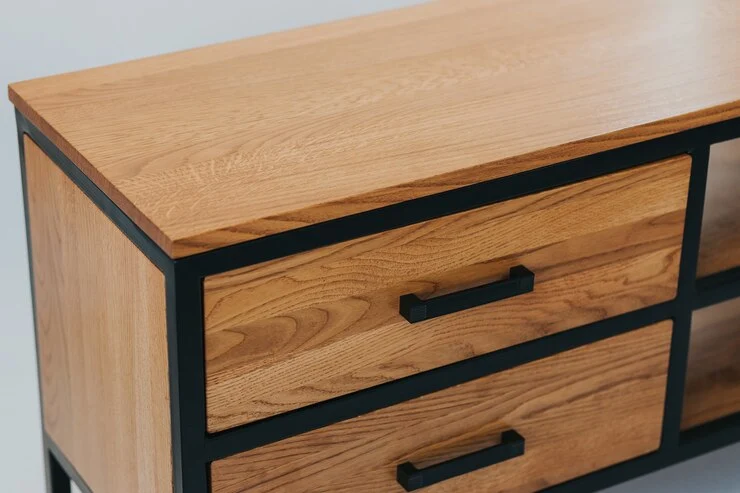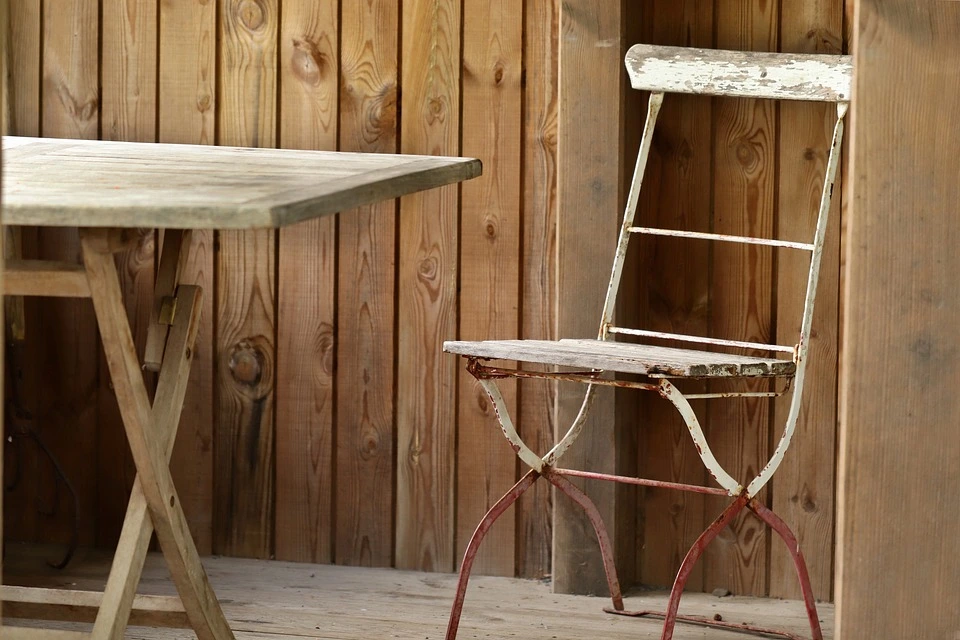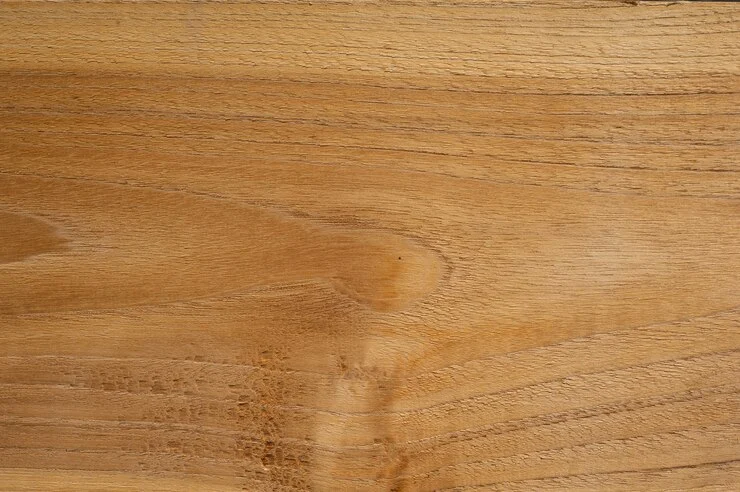When you think about tan wood, most people assume it’s stained or treated to get that warm, golden hue. However, achieving a natural tan wood finish that is not stained is entirely possible. In fact, many people prefer the look of naturally tan wood that is not stained because it highlights the wood’s inherent grain, texture, and character.
In this post, we’ll explore how you can achieve a tan wood finish without the need for staining. Whether you’re working with raw wood or want to enhance the color of your existing furniture, you’ll find simple yet effective methods to bring out that perfect natural tan tone.
What Makes Wood Turn Tan?
Before we dive into the methods of achieving tan wood, it’s important to understand why and how wood turns tan in the first place. Wood’s natural color can range from pale blonde tones to deep browns. The color is influenced by the type of wood, the age of the tree, and how the wood has been treated or finished.
The tan shade that many people seek is often the result of natural aging, oxidation, and exposure to light. Over time, as wood is exposed to sunlight and air, its natural oils and resins can cause it to deepen into a golden-brown hue.
What Is Tan Wood That Is Not Stained?
Tan wood that is not stained refers to wood left in its natural state, free of chemical stains or artificial coloring. Its tan hue is derived from the species of the tree and the wood’s exposure to light. Popular types of naturally tan wood include:
- Oak
- Birch
- Pine
- Maple
Each of these woods showcases a range of tan shades, from light honey tones to richer caramel hues, providing versatility for various design styles.
Why Choose Tan Wood Over Stained Wood?
Many people opt for tan wood finishes because they love the idea of keeping the natural character of the wood intact. Stains, on the other hand, can sometimes mask the wood’s natural grain and texture. Here are a few reasons why you might want to choose natural tan wood over stained wood:
- Natural Appearance: Tan wood retains the authentic texture and grain of the wood, providing a timeless, organic look.
- Eco-Friendly: By avoiding stains and chemicals, you’re choosing a more natural, eco-friendly option.
- Longer Lasting: Tan wood, especially if treated with a protective finish, can last for many years without fading or changing color significantly.
How to Naturally Darken Wood Without Staining?
Expose wood to sunlight
One of the simplest ways to achieve a tan wood finish is by exposing it to natural sunlight. Sunlight has a natural aging effect on wood that darkens its tone over time. While it may take several weeks or even months, the results can be beautiful and permanent.
How to Do It:
- Place your wood outdoors in a sunny spot, preferably with direct sunlight exposure.
- Make sure to rotate the wood periodically to ensure an even tan.
- Be mindful of the wood’s exposure to the elements, as too much moisture or rain can damage the surface.
Pros:
- Natural and eco-friendly method.
- No chemicals or stains required.
Cons:
- Slow process; results take time.
- Wood may be affected by weather conditions if not cared for properly.
Using Tea or Coffee to Darken Wood Naturally
If you want a quicker way to achieve a tan wood finish, you can use tea or coffee. These liquids can stain the wood lightly, giving it a soft tan appearance while also enhancing the grain. Both tea and coffee are natural and free from harsh chemicals.
How to Do It:
- Make a strong cup of tea or coffee.
- Dip a clean cloth or sponge into the liquid and apply it to the wood surface.
- Let it sit for about 15-20 minutes, then wipe off any excess liquid.
- You can repeat the process to darken the color to your desired shade.
Pros:
- Fast and simple method.
- Completely natural.
Cons:
- Color may be lighter than desired on certain types of wood.
- Needs to be applied several times for a deeper tan.
Using Lemon and Olive Oil
Another natural way to achieve a tan wood finish is by using a mixture of lemon juice and olive oil. The acidity of lemon juice can help bring out the natural tannins in the wood, while olive oil will help nourish the wood and enhance its natural sheen.
How to Do It:
- Combine equal amounts of lemon juice and olive oil in a bowl.
- Use a soft cloth to apply the mixture to the wood.
- Let the solution sit on the wood for a few hours before wiping off any excess.
Pros:
- Natural and nourishing for the wood.
- Helps enhance the natural beauty and sheen of the wood.
Cons:
- The results may vary depending on the type of wood.
- Needs regular reapplication to maintain the tan.
Vinegar and Steel Wool
For a deeper tan color, you can use vinegar and steel wool. When combined, these ingredients create a chemical reaction that can naturally darken the wood without the use of artificial stains.
How to Do It:
- Soak steel wool in vinegar for 24-48 hours.
- Strain the mixture and apply it to the wood using a cloth or brush.
- The longer you leave the mixture on, the darker the wood will become.
- Remove any extra liquid and allow the wood to dry fully.
Pros:
- Creates a rich, dark tan finish.
- Easy to apply.
Cons:
- Can give uneven results if not applied carefully.
- Can darken the wood too much if left on too long.
Using a Wood-Toning Oil Finish
Another option for achieving tan wood without staining is by using a wood-toning oil. These oils can enhance the natural color of the wood, giving it a tan or honeyed hue without the need for stains or dyes.
How to Do It:
- Choose a wood-toning oil that’s designed to enhance the natural color of wood.
- Apply a thin layer of oil with a soft cloth or brush.
- Wipe off any excess oil and allow the wood to absorb the finish.
- You can repeat the application to achieve a deeper tan color.
Pros:
- Brings out the wood’s natural beauty.
- Provides protection against moisture and wear.
Cons:
- Requires some maintenance to keep the finish looking fresh.

Popular Applications for Tan Wood That Is Not Stained
Furniture
Unstained tan wood is a staple in furniture design. Tables, chairs, and bed frames crafted from natural tan wood provide a clean and classic look.
Flooring
Tan wood flooring offers a warm, inviting base for any room. Its neutral tone pairs well with bold and muted color palettes alike.
Wall Paneling
Unstained wood paneling adds depth and texture to walls, making spaces feel cozy and sophisticated.
Decorative Pieces
Think cutting boards, picture frames, and shelving. These small touches of tan wood can elevate the overall aesthetic of a room.
How to Identify Tan Wood That Is Not Stained?
Here are some tips for spotting genuine unstained tan wood:
- Inspect the Grain: Natural wood grain patterns are unique and irregular, unlike synthetic imitations.
- Smell the Wood: Unstained wood often retains a mild, earthy aroma.
- Check for a Finish: Many unstained pieces may have a clear protective finish, but no pigment should alter the wood’s natural tone.
Wood Identification App
In the past, identifying wood species required expertise, reference books, or consulting with professionals. Now, wood identification apps make the process quicker and more accessible, even for beginners. These apps use technology such as image recognition, databases, and AI to help you determine wood types with accuracy. Whether you’re a DIY enthusiast, a woodworker, or just curious, these tools can make wood identification effortless.
How Do Wood Identification Apps Work?
Most wood identification apps use advanced technology to analyze wood samples. Here’s how they typically function:
- Image Recognition: Upload a photo of the wood grain or texture. The app compares it with a database of wood species.
- AI Algorithms: Analyze unique features like grain patterns, color, and density.
- Search Filters: Users can input details such as the wood’s color, weight, or hardness to narrow down possibilities.
Benefits of Using Wood Identification Apps
Wood identification apps offer several advantages:
- Convenience: Identify wood species from the comfort of your home or workshop.
- Accuracy: Many apps have vast databases, ensuring reliable results.
- Educational Value: Discover the features, origins, and uses of various wood types.
- Cost-Effective: Save money by eliminating the need for professional consultations.
The Best Wood Identification Apps
a) Xylorix Inspector
A powerful app designed for professionals and hobbyists alike. It uses AI to identify wood species quickly.
Key Features:
- Extensive wood database.
- High accuracy in image analysis.
- Offline functionality.
b) Wood Species ID
This app caters to both beginners and seasoned woodworkers. It offers detailed information about each wood type.
Key Features:
- Large collection of North American and exotic wood species.
- Intuitive user interface.
- Educational resources about wood properties.
c) Forest Tree Identification
Although primarily for tree species, this app works well for identifying wood types based on grain and texture.
Key Features:
- Ideal for nature enthusiasts.
- Includes tree leaf and bark identification.
- GPS integration for identifying trees in specific regions.
d) PictureThis
Originally designed for plant and tree identification, this app also has a robust wood recognition feature.
Key Features:
- AI-powered analysis.
- Vibrant community for sharing insights.
- High-definition scanning capability.

How to Tan Wash Wood: A Step-by-Step Guide
A tan wash is a semi-transparent finish that lightly coats the wood surface, creating a muted, warm hue without completely covering the natural grain. This method is commonly used for:
- Furniture Makeovers
- Accent Walls
- Wooden Beams
- Decorative Pieces
Unlike heavy stains or paint, a tan wash highlights the wood’s texture while offering a soft, earthy tone.
Materials and Tools You’ll Need
To tan wash wood, gather the following materials:
Materials
- Wood Piece: Furniture, panels, or decor you wish to tan wash.
- Paint: Choose tan latex or chalk paint.
- Water: For diluting the paint.
- Sealant: Clear polyurethane or wax for protection.
Tools
- Sandpaper: Medium and fine-grit.
- Paintbrush: A natural-bristle or synthetic brush.
- Rag or Sponge: For wiping off excess wash.
- Mixing Container: To dilute the paint.
Preparing the Wood for a Tan Wash
Preparation is crucial for achieving an even and professional-looking finish.
- Clean the Wood: Remove dirt, dust, and grease using a damp cloth.
- Sand the Surface: Use medium-grit sandpaper to smooth rough areas, followed by fine-grit sandpaper for a polished surface.
- Wipe Clean: Use a tack cloth to remove all sanding debris.
- Test on a Small Area: Always test your tan wash on an inconspicuous spot to ensure you like the color and effect.
How to Mix the Tan Wash?
To create your tan wash mixture, follow these steps:
- Dilute the Paint: Mix one part tan paint with one to two parts water, depending on the desired transparency.
- Stir Well: Use a stir stick to ensure the paint and water are fully combined.
- Adjust Consistency: If the mixture is too opaque, add more water; if it’s too light, add more paint.
Applying the Tan Wash
Here’s the step-by-step process for applying a tan wash to wood:
- Brush on the Mixture: Use a paintbrush to apply the diluted tan paint to the wood in long, even strokes, following the grain.
- Wipe Off Excess: Immediately use a clean rag or sponge to wipe off excess paint, leaving a subtle wash over the surface.
- Blend as Needed: Smooth out any streaks or uneven areas with a damp cloth.
- Let Dry: Allow the wood to dry completely (typically 24 hours) before assessing if a second coat is needed.
Adding Depth with Multiple Coats
For a richer tan tone:
- Apply a second or third coat of the tan wash, ensuring each layer dries before applying the next.
- Use a lighter touch when wiping off subsequent layers to avoid removing too much of the previous coat.
Sealing the Tan Wash
To protect your wood and enhance its durability, apply a clear sealant:
- Polyurethane: For a shiny or smooth finish.
- Wax: For a soft, matte look.
Apply the sealant with a brush or cloth, following the manufacturer’s instructions, and allow it to dry fully.
Common Mistakes to Avoid
- Skipping Sanding: Leads to uneven application and poor adherence.
- Using Too Much Paint: Results in an opaque finish rather than a wash.
- Not Testing the Mixture: Always check the color on a small area first.
- Rushing Dry Time: Each coat must dry completely to avoid smudging or peeling.
Tan Washing Different Types of Wood
Different woods react differently to a tan wash:
- Softwoods (Pine, Cedar): Absorb the wash quickly and may require a lighter mixture.
- Hardwoods (Oak, Maple): Provide a more even finish but may need multiple coats for depth.
- Reclaimed Wood: Offers a unique texture but should be thoroughly cleaned and sanded before application.
Styling Tips for Tan-Washed Wood
- Farmhouse Look: Pair tan-washed furniture with white or cream-colored decor for a rustic vibe.
- Contemporary Style: Use tan-washed wood in combination with black accents and minimalist designs.
- Coastal Theme: Complement tan-washed wood with blue, teal, and sandy tones for a breezy, beach-inspired space.
Maintaining the Beauty of Unstained Tan Wood
Proper care ensures that your tan wood stays stunning for years. Follow these tips:
- Regular Dusting: Use a soft cloth to remove dirt and debris.
- Avoid Excessive Moisture: Wipe up spills immediately to prevent water damage.
- Apply Natural Oils: Enhance the wood’s luster with linseed or tung oil.
- Protect Against Sunlight: Prolonged exposure can cause discoloration.
Challenges of Using Unstained Tan Wood
While stunning, unstained tan wood does come with challenges:
- Color Variability: The natural tone may differ from one piece to another.
- Requires Sealing: Without a finish, the wood can absorb moisture and stains.
- Limited Options: Not all woods have a naturally tan hue.
However, these challenges are manageable with proper care and planning.
Conclusion: Celebrate the Natural Beauty of Tan Wood
Choosing tan wood that is not stained allows you to embrace nature’s artistry. Its timeless appeal, durability, and eco-friendliness make it a standout choice for furniture, flooring, and decor. By understanding its characteristics and maintenance, you can enjoy its raw elegance for years to come.
Whether you’re revamping your home or starting fresh, consider the natural beauty of unstained tan wood for a design that’s truly one-of-a-kind.
